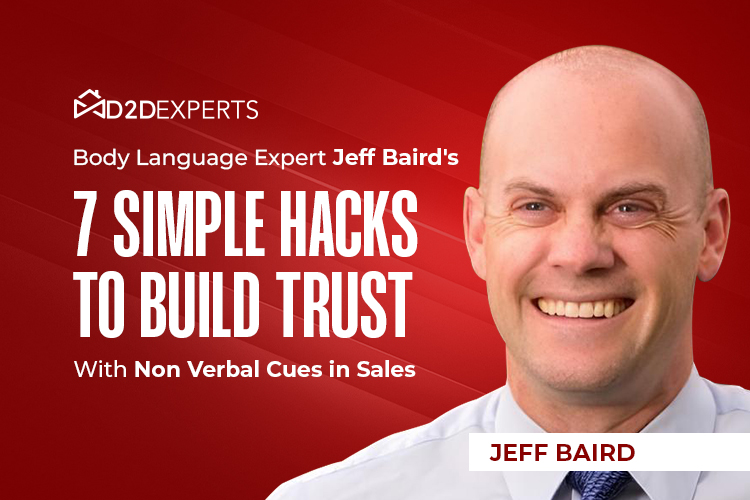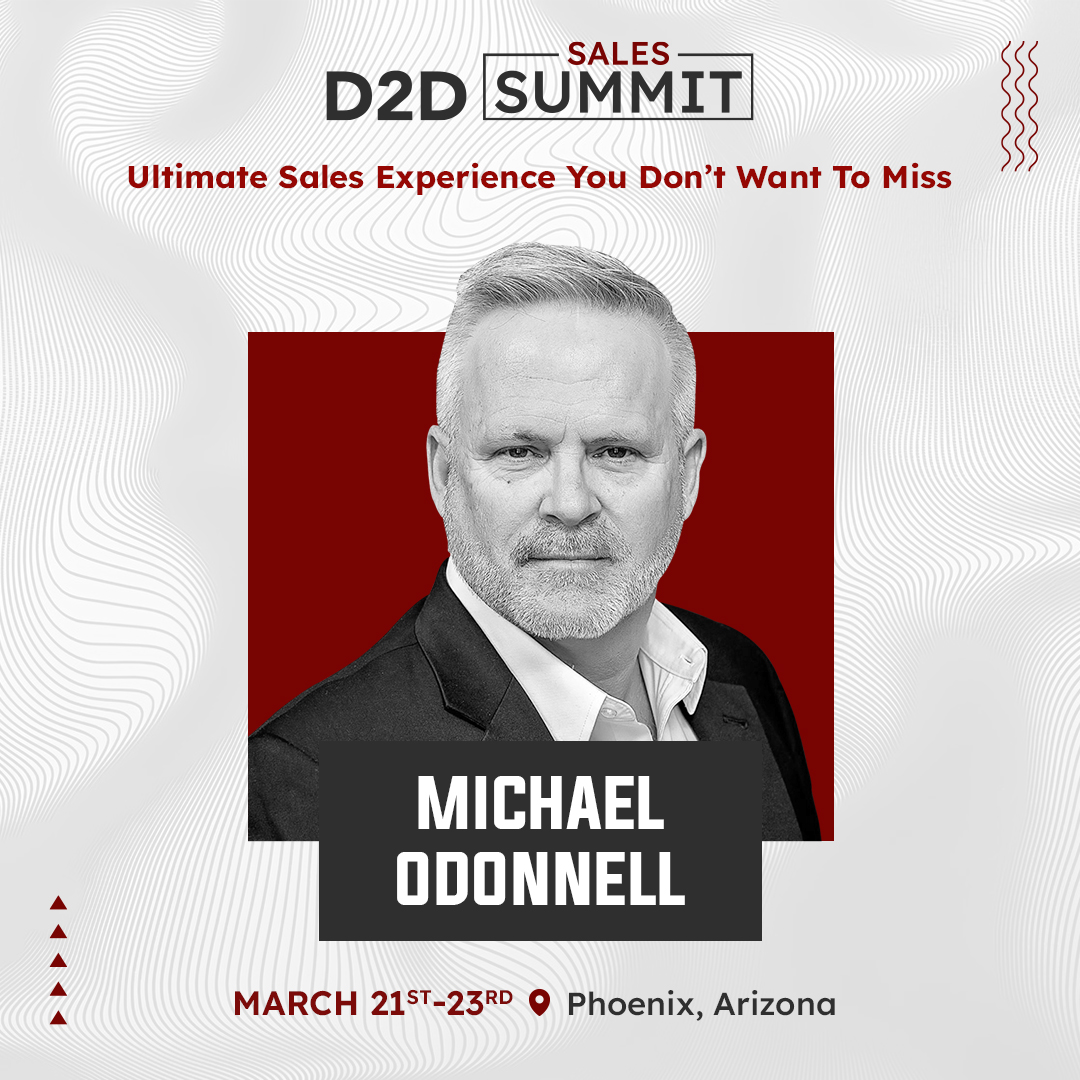Albert Mehrabian, a body language expert, discovered that communication is:
- 55% nonverbal
- 38% vocal
- 7% words
What you say matters, but how you say it can make all the difference when dealing with prospects.
In a sit-down with Jeff Baird, a seasoned body language and sales expert, we explored how to turn prospects into buyers through nonverbal cues. Coming from an IT and data background, Jeff has an intriguing perspective on how nonverbal cues can influence sales outcomes and build or break trust with potential customers far beyond what data and words can achieve.
Watch the conversation below or keep reading for a detailed overview
Key Takeaways from the Podcast
Let’s talk about Jeff’s 7 hacks for building client trust. He shares more. Watch the podcast for the entire conversation.
-
First Impressions Count
The initial moments of any interaction lay the foundation for your relationship with a potential client. A warm smile, a subtle eyebrow raise, and a slight head tilt instantly portray you as friendly and approachable. This nonverbal trifecta sends a powerful message of openness and eagerness to engage, which is crucial for breaking the ice in solar sales. These seemingly simple gestures are the silent harbingers of your intent, setting the stage for a positive dialogue.
-
Space and Orientation Matter
The physical distance between you and your client and how you position yourself speaks volumes. By maintaining a respectful distance and slightly angling your body, you communicate non-aggressiveness and respect for personal space. This strategic positioning makes you appear less threatening and more inviting, easing the client into a comfortable interaction state. It’s a subtle dance of giving space while still being engagingly present.
-
Mirroring for Rapport
Mirroring, subtly copying the client’s body language, is a powerful tool for establishing rapport and trust. You nonverbally convey by reflecting on their posture, gestures, and expressions, “I am like you; we are on the same wavelength.” This familiarity breeds comfort and trust, which are pivotal in any sales conversation. When mastered, mirroring is a nuanced skill that can significantly enhance your connection with your clients.
-
Mind Your Hand Gestures
How you use your hands during a conversation can significantly impact your message. Open palms are universally recognized as signs of honesty and sincerity, inviting trust and openness. In contrast, pointing fingers or closed fists can appear aggressive or domineering, potentially erecting barriers between you and the client. Conscious control of your hand movements can thus subtly influence the direction and outcome of your sales pitch.
The subtle art of body language is central to sales success.
As we reflect on Jeff’s wisdom, let’s connect the dots to the upcoming Sales Management Summit.
Imagine coupling the dynamism of Michael Bernoff’s communication wizardry with the expertise of the solar industry’s Godfather, Michael O’Donnell. That’s the vibe we’re bringing to the Sales Management Summit in Arizona on March 21st!
Michael O’Donnell, folks, isn’t just a top gun in solar sales; he’s a masterclass in making every interaction count. His legendary “today only” method? It’s about sparking connections that seal deals and create legacies. His story isn’t just inspiring; it’s a playbook for us all on the power of first impressions.
Here’s the takeaway: Mastering that initial meeting isn’t just important; it can be game-changing. And guess what? At our Sales Management Summit, you’ll get to explore strategies that make legends like O’Donnell tick.
-
Control Your Environment
Your physical demeanor—how you stand, hold yourself, and move—broadcasts your confidence and authority. Adopting a posture that exudes self-assurance, with shoulders back and head held high, signals your client that you believe in what you’re selling. Open body language conveys your confidence in your product and reassures the client of their decision-making process. It’s about embodying the confidence you want your clients to feel about their solar investment.
-
Listen Actively
Active listening is more than just hearing the words spoken; it’s about fully engaging with the speaker verbally and nonverbally. Nodding in agreement, maintaining eye contact, and mirroring the speaker’s expressions show you fully immersed in the conversation. These cues affirm to the client that their concerns and questions are being acknowledged and valued, fostering a deeper level of communication and understanding.
-
Control Your Nervous Energy
Nervous habits or fidgeting can inadvertently communicate anxiety or lack of confidence, undermining the trust you’re working to build. Being conscious of and controlling these impulses—whether playing with your pen, touching your face, or tapping your feet—helps maintain a confident demeanor. By managing your nervous energy, you ensure that your nonverbal cues align with the confidence and reliability that your solar solutions represent.
Making Peace With the Vampires: How to Handle Difficult Clients With a Smile
Embrace the Nonverbal with Body Language in Sales
I knocked doors since I was 11! Never bought into the whole hourly normal job, and used direct sales to be the vehicle to create MASSIVE success. I Started the Direct Sales division for Solcius as their VP building it up to have 70+ sales reps nation wide. In 2018 I left to pursue a greater mission to unify and uplevel the Door to Door industry and founded the D2D Experts.




























